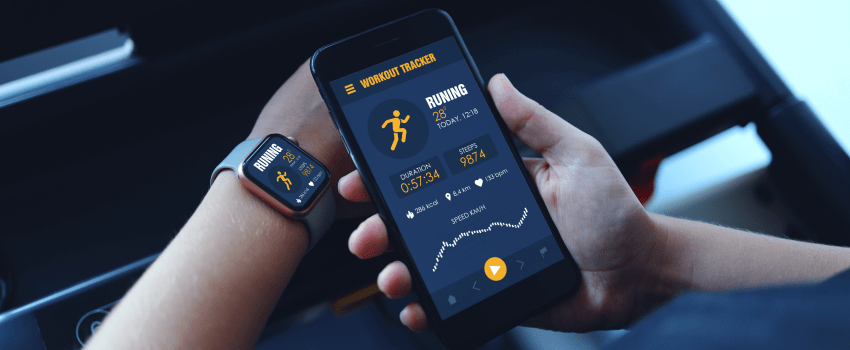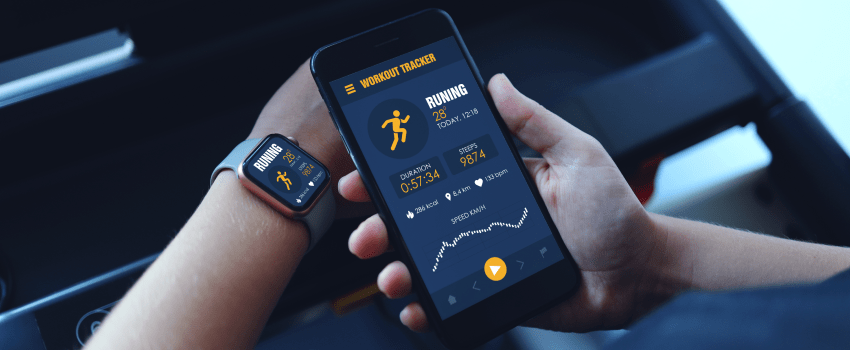 As the world shifts toward real-time connectivity and mobile-first experiences, Wearable App Development has emerged as a key innovation driver across industries. From fitness trackers to smartwatches, wearable technology is changing how users interact with the digital world instantly, intuitively, and on the move.
As the world shifts toward real-time connectivity and mobile-first experiences, Wearable App Development has emerged as a key innovation driver across industries. From fitness trackers to smartwatches, wearable technology is changing how users interact with the digital world instantly, intuitively, and on the move.
With global wearable shipments expected to surpass 543 million units in 2024 and market value forecasted to reach $186.14 billion by 2030, building applications for these compact, sensor-rich devices is more than a trend it’s a strategic opportunity for growth.
What Is Wearable App Development?
Wearable app development involves creating software applications specifically designed to run on wearable devices such as smartwatches, fitness bands, smart glasses, and AR/VR headsets. Unlike traditional mobile apps, these applications must account for smaller screen sizes, limited processing power, and hands-free or sensor-based interaction.
Smart wearable apps must prioritize real-time responsiveness, intuitive user experiences, and seamless integration with other devices or ecosystems. Whether enhancing personal wellness, productivity, or operational efficiency, wearable apps are designed to function as quick-access, on-the-go digital companions.
Types of Wearable Applications
- Health & Fitness Apps: Monitor heart rate, sleep patterns, calories, and steps to promote healthier lifestyles.
- Lifestyle & Wellness Apps: Enable meditation, stress tracking, hydration reminders, and habit-building.
- Productivity Tools: Deliver alerts, manage tasks, or provide on-field instructions in enterprise settings.
- Smartwatch Companion Apps: Extend core smartphone functionalities like calls, messages, reminders.
- Industry-Specific Apps: Power operations in logistics, fintech, education, and manufacturing through hands-free workflows.
How Wearable App Development Differs from Mobile App Development
While similar in concept, wearable apps are tailored for highly contextual, sensor-rich environments and limited interface capabilities.
- Hardware Limitations: Developers must optimize performance within restricted CPU, RAM, and battery constraints.
- User Interface: Design focuses on minimal taps, quick glances, and gesture or voice interactions.
- Companion Dependency: Many wearable apps rely on a parent mobile app to sync data or provide backend support.
- Platform Specialization: Familiarity with SDKs like Wear OS and watchOS is essential for compatibility.
Unlike broader smartphone apps, wearable solutions need micro-interactions, energy efficiency, and seamless device interoperability.
Benefits of Wearable App Development
Businesses investing in wearable app development gain measurable advantages:
- User Engagement: Instant updates and personalized prompts increase usage and retention.
- Convenience & Mobility: Tasks like notifications, tracking, and controls are accessible without unlocking a phone.
- Health Monitoring: Real-time biometric data collection supports early diagnosis and wellness goals.
- IoT Integration: Wearables can serve as hubs for smart devices, enhancing connected ecosystems.
- Personalized Insights: Continuous data streams allow apps to deliver tailored user feedback.
Expert view: Automotive App Development Company You Can Actually Trust
Key Features of High-Performance Wearable Apps
To succeed in the wearable space, applications must combine smart functionality with lightweight execution. Top features include:
- Real-time data syncing
- Voice and gesture controls
- Health and fitness metric tracking
- Battery-optimized background operations
- Alerts and notifications
- Customizable user interfaces
- Cross-device connectivity
- Data security and encryption
The ideal wearable app works as an invisible assistant always there, yet never in the way.
Wearable App Development Process
Developing a wearable app involves a focused, user-first approach that blends functionality with technical feasibility:
- Conceptualization: Define the user problem, audience, and device ecosystem.
- Market Research: Study competitors and industry gaps to refine positioning.
- Feature Planning: List must-have and value-add functionalities.
- UX/UI Design: Build intuitive designs tailored to wearable screen formats and interaction styles.
- Tech Stack Selection: Choose suitable SDKs, APIs, platforms (watchOS, Wear OS, Tizen).
- Development: Implement logic, connect sensors, ensure performance and sync.
- Testing: Validate across form factors, simulate motion, and ensure energy efficiency.
- Launch & Feedback Loop: Deploy to app stores and collect user insights for iteration.
- Ongoing Maintenance: Update for OS changes, security, and evolving user needs.
Partnering with a seasoned mobile app development company ensures this journey is efficient, scalable, and aligned with business goals.
Industry Applications of Wearable Apps
1. Healthcare: Apps that monitor heart rate, glucose levels, or oxygen saturation empower remote care and early diagnostics.
2. Logistics & Manufacturing: Workers use smart bands for location tracking, equipment alerts, and hands-free workflows.
3. FinTech: Wearable banking apps enable contactless payments and instant fraud alerts.
4. Retail & eCommerce: Smart glasses support inventory checks, while wrist devices deliver real-time promotions.
5. Fitness & Sports: Athletes monitor performance metrics, recovery, and training loads using customized apps.
6. Education: Wearables track student engagement or provide interactive, AR-based learning experiences.
Challenges and Solutions in Wearable App Development
- Battery Life: Optimize code, minimize sensor polling, and use native SDK energy-saving functions.
- Screen Size Constraints: Design for glances, not browsing. Use iconography, short text, and large tap targets.
- Device Fragmentation: Use modular architecture and cross-platform frameworks where possible.
- Data Privacy: Employ strong encryption, anonymized data handling, and compliance with HIPAA/GDPR.
- Syncing & Connectivity: Leverage Bluetooth Low Energy, cloud APIs, and fallback modes for seamless performance.
These technical nuances underscore the importance of working with a partner that specializes in wearable technology development.
Cost Breakdown: Wearable App Development
| Project Scope | Estimated Cost (USD) | Timeline | Key Features |
|---|---|---|---|
| Basic App | $5,000 – $15,000 | 1 – 2 Months | Basic fitness tracking, step count, simple UI |
| Mid-Level App | $15,000 – $30,000 | 2 – 4 Months | Sleep/heart monitoring, sync with mobile, alerts, personalization |
| Advanced App | $30,000 – $60,000+ | 4 – 6+ Months | AI-based insights, AR/VR, cross-device sync, enterprise features |
Note: Final pricing depends on complexity, design depth, platform integration, and API/data requirements.
Recommended read: Self-Serve Ad Platform: Read This Before You Start
Why Wearable App Development Matters for Businesses
As wearables become more integral to consumer and enterprise life, the opportunity to innovate through wearable software grows exponentially. Businesses leveraging this trend can:
- Reach new market segments
- Enhance user loyalty with value-added features
- Collect granular user behavior data
- Offer personalized services in real-time
- Improve operational productivity across departments
Wearables bridge the gap between physical presence and digital interaction. Investing in the right application can create competitive advantages that last.
Conclusion
Wearable app development is no longer an add-on; it’s a necessity for forward-thinking businesses seeking to deliver seamless digital experiences. With a blend of real-time data, personalized insights, and effortless interactivity, wearables offer brands an unparalleled way to stay close to their users—literally.
Whether you’re looking to build a fitness tracker, a healthcare companion, or a next-gen productivity tool, working with the right development team is key. At Inexture Solutions, we specialize in building scalable, secure, and UX-first applications for wearable ecosystems.
The post Wearable App Development: Smart Solutions for Smart Devices appeared first on Inexture.
Source: Read MoreÂ



